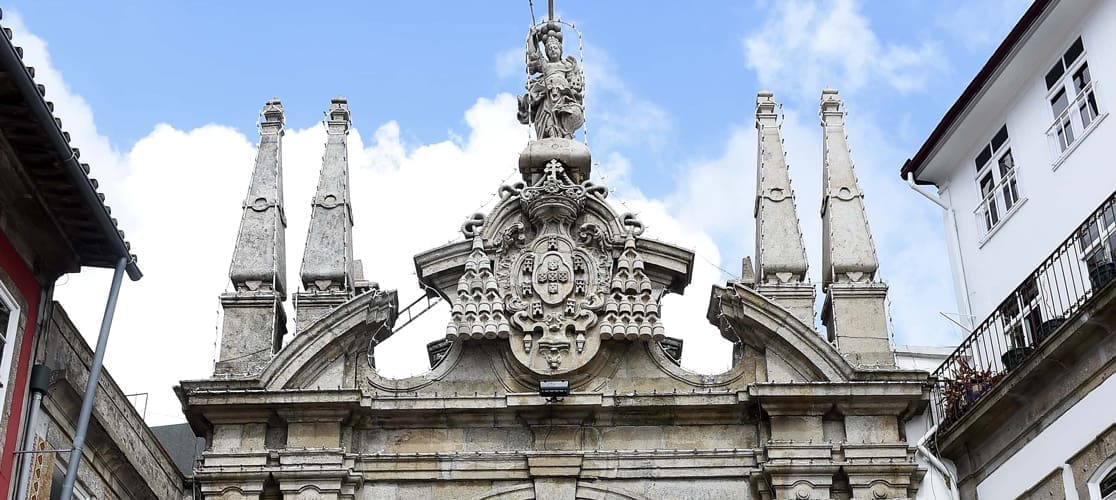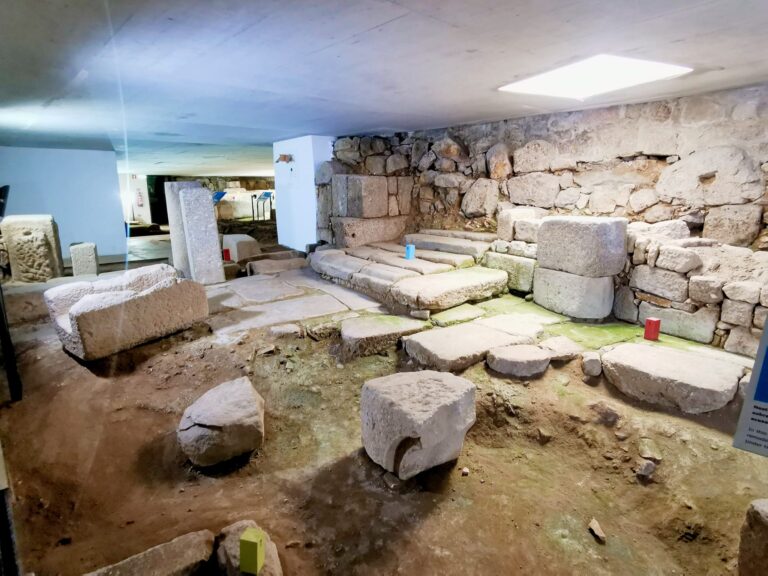The arch of the Souto street was opened in the wall that surrounded the city of Braga at the beginning of the XVI century, by initiative of the then bishop D. Diogo de Sousa.
Known as Porta Nova, it was located at the top of one of the most important arteries, the Souto or commercial street. Therefore, the arch that we know today only acquired its current configuration in the eighteenth century.
The perfect semicircular arch is formed by elements typical of the works of Soares made in the middle of the century. If the work of André Soares gave Braga an important mark of late baroque and rococo, the Arco da Rúa Nova must be understood as one of his most significant urban interventions.
In any case, this monument is evidence not only of the relevant religious patronage in what is known as the city of the archbishops, but also the announcement of a new artistic epoch -the neoclassicism-, which would come to prevail with the work of Carlos Amarante.

 Braga, Northern Portugal
Braga, Northern Portugal





 Página Web
Página Web 




